‘Shocked at her injuries’: What to know before high intensity workouts. We try 5 of them
CrossFit and Spinning classes are among workouts gaining in popularity in Singapore. But how intense are they, what are the risks and how to prepare for them? To find out, Talking Point host Steven Chia signs up for some suffering.
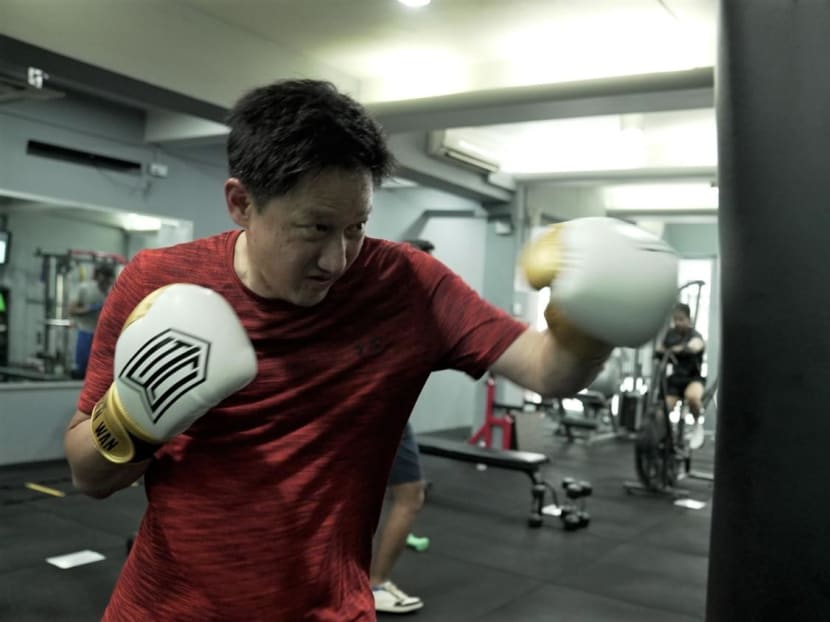
Talking Point host Steven Chia channels the Eye of the Tiger.
SINGAPORE: She was about to cross the road when her legs gave way, and she fell. She got up but fell again on the way to the bus stop.
The 21-year-old had just come from a fitness studio, where she’d had an intensive 50-minute cycling workout in her very first Spinning class. What happened to her after that, however, was more than just a case of physical exertion.
Her legs were still painful the next day, so she went to a clinic. Following a blood test, the doctor told her it was a “muscle breakdown”.
Two days later, on Jan 26, the doctor did another test and found her muscle breakdown to be “so severe” that she was taken to hospital, recounted her father, Dominic Ang. His daughter was hospitalised for six days.
“We were shocked at the severity of her injuries,” he said. “Fortunately, she’s on the road to recovery.
“But she still has to make visits to the clinic for blood tests, to make sure that the breakdown of her muscle fibres has decreased. If it remains elevated, she has to be readmitted.”
Her condition, known as rhabdomyolysis, is less uncommon these days. In some cases, it may lead to kidney failure and even death — if the kidneys are not fast enough in removing the muscle proteins that were released into the bloodstream.
Three doctors from Changi General Hospital’s emergency department wrote last year to the Annals, the journal of the Academy of Medicine Singapore, to raise awareness of the “increasing number” of Spinning-induced cases they were seeing.
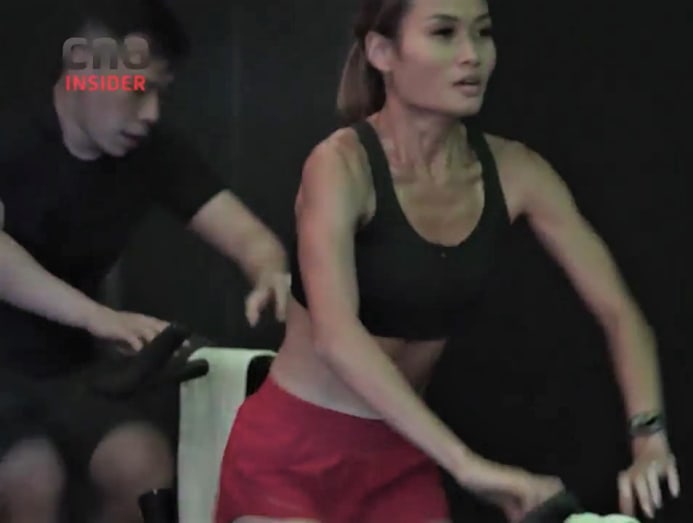
Renal medicine specialist Angeline Goh at Mount Elizabeth Hospital also cited the increasing popularity of CrossFit and Spinning classes when she warned of the danger of rhabdomyolysis in the health and wellness web resource, Health Plus.
For the Angs, it was a condition they were unaware of previously. And for many beginners in these intensive workouts, it is an example of the risks they should know before they sign up.
To find out how intense these workouts can be and how to get ready for them, Talking Point host Steven Chia tried his hand at five different types: Spinning, high-intensity interval training (HIIT), boxing conditioning, CrossFit and a Spartan boot camp.
He had only ever tried HIIT before, although he does go to the gym and plays racket sports — both once a week — to “break out in a sweat, but … not that intense”.
WATCH: Is high intensity training for me? Steven tries 5 workouts: Spin, HIIT, Boxfit, CrossFit & Spartan (13:57)
He managed to survive the new fitness challenges, coming away with a bit of fun but also pain.
A DOCTOR’S MESSAGE
For those with an underlying medical issue such as asthma, they should consult a doctor before starting on any workout.
Even for those without, they should have a good idea of their body mobility and whether their joints are “too tight for them to start all these exercises”, if they want to avoid injury.
That is the advice of orthopaedic surgeon Tan Chin Yik, who cited the shoulders, hamstring, quadriceps (front thigh) and calf muscles as some of the things people can self-assess and should be stretching before the workout.

For the uninitiated, his advice is to watch videos of the workout beforehand — to familiarise themselves with the movements so they know what to expect. “A high intensity workout isn’t something suitable for everyone,” he said.
The average person should “always start with the low intensity workout” such as jogging, before pushing on to intensive workouts. Adequate rest and hydration are also prerequisites.
“Secondly, in terms of mental preparation, it’s very important that we understand that it’s a process of gradual progression. We can’t push ourselves too much, especially the first time we do a workout,” he added.
For people who push themselves “because the whole idea is to work the body”, as Chia put it, they should look out for red flags to know they have gone too far. These include chest pains, giddiness and vomiting.
“It’s quite common to feel like vomiting after an intense workout, but generally, it’s not recommended to push yourself too much unless you’re going for competitions,” said Tan. “Stop immediately if you have any of these red flags.
“If the pain you’ve experienced after the workout lasts for more than three to five days … you should be worried. You should seek medical attention.”
Other symptoms to seek help for include weakness in arm movements, swollen joints and locked joints, which means the joint is stuck in one position.
He recommends resting for “at least two days” when starting off intensive workouts, with a maximum of two workouts per week for beginners. This does not preclude squeezing in a lighter workout such as jogging, or a “stretching workout” like yoga.
Related articles:
Diet can make a difference. “A little bit more protein can help you with your muscle recovery. But it’s still important to get other nutrients, like carbohydrates … electrolytes as well as vitamins,” said Tan.
“Some people tend to think that after they do a full workout … they can eat anything they want. And that’s not true — it still depends on the calorie count.”
THE DIFFERENT WORKOUTS
Not every type of workout gives the same calorie burn either, among other differences between the exercise routines Chia tried.
One of the sessions was an F45 cardiovascular training called Varsity, which takes an HIIT approach.
“We try to have shorter periods of rest, and we’re trying to get that heart rate really high (with) the movements performed a lot faster,” said franchisee Luciano Tesoriero, who owns a few F45 studios in Singapore.
“We don’t have prolonged periods of exertion; we have short, sharp bursts.”
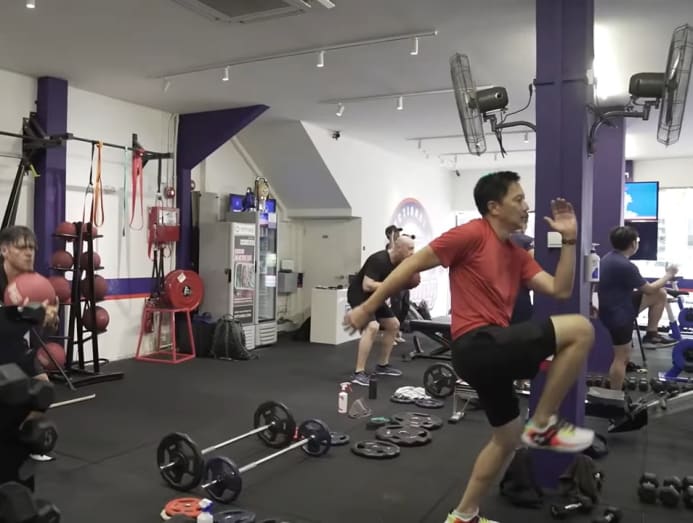
The nine-station circuit includes a rowing machine, exercises such as burpees and a few fatigued faces at the end of three laps.
“At F45, the more common injuries we see result from overtraining,” said Tesoriero. “They’ll come in five, six, sometimes seven days a week.
They might have a slight niggle or something, and they should really go and see a physio or maybe take a week’s rest.”
On a scale of one to five, Chia rated the 45-minute workout “a six or seven” in terms of intensity.
“There were times I felt like … my heart was jumping out of my body,” he said. “The pain was up there. But no pain, no gain, right?”
The next morning, he woke up with some muscle stiffness in his shoulders, back and calves, which he tried to relieve by stretching.
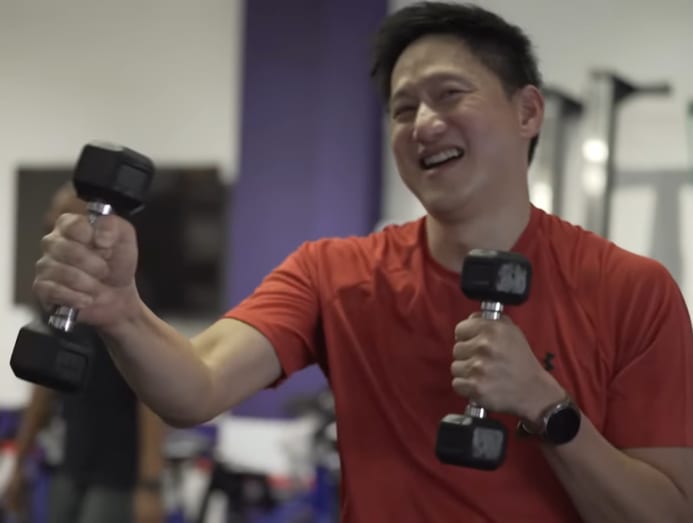
Another cardio workout was the BoxFit class at the Legends Fight Sport boxing gym. It incorporates boxing techniques and movements into a variety of body conditioning exercises.
This includes rounds of footwork, shadow boxing, hitting a punchbag and sparring with the use of pads. These classes last between 45 minutes to an hour, which Chia rated a four in terms of intensity.
“You get a little bit more of a breather,” he said, comparing the class with his HIIT workout. “But still painful.”
For his CrossFit class, Chia tried the hour-long Urban WOD (workout of the day) at CrossFit Urban Edge.
“The difference between a HIIT workout and CrossFit will be that you’ll learn some unique movements, such as Olympic weightlifting (and) gymnastics, which you won’t see in a regular HIIT workout,” said Jeff Lin, co-founder and coach at the gym.
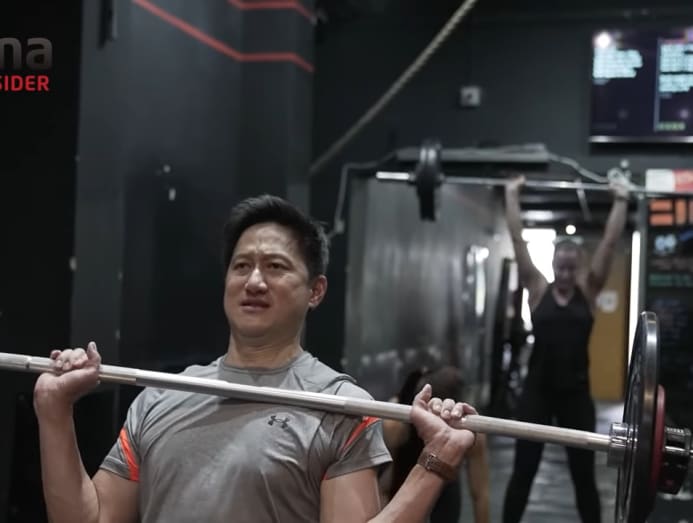
CrossFit can be intimidating to most people but is “actually very accessible” once they try it, he added. The movements are technical, however, and some people sustain back or shoulder injuries.
“With any of these movements where you manoeuvre heavy weights … our key focus is always your back, making sure that you keep your chest up (and) stay on the heels of your feet rather than rolling onto your toes,” he said.
“If you’re tired (and) not very mindful of your technique, you can start overloading your lower back and hurt your lower back.”
Chia, who gave CrossFit a “killer” rating for intensity, said the post-workout was the most painful “because we were using weights and working out parts of my body that I don’t normally use that much”.
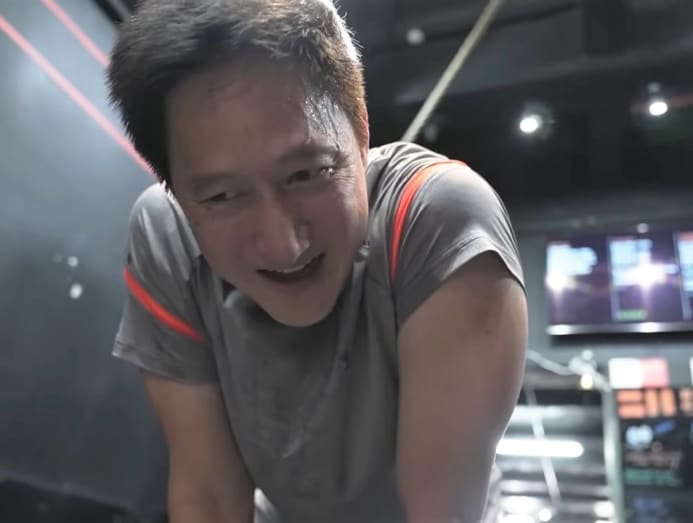
The unique feature of his next workout, the Spartan boot camp, was the obstacle course. It is aimed at preparing people for the Spartan Race, the world’s leading obstacle race.
“It’s fun, it’s different, it’s hard work and it definitely gives you something to work on, both skill-based as well as (strength) development,” said Will Petty of Ministry of Fitness.
For over half an hour, you could be “working non-stop”, he warned. “Your heart rate should hopefully be going pretty high throughout … because that’s what it’s going to feel like in the race.”
The Spartan group exercise coach sees people complaining of knee pains “a lot”, usually due to inflexibility as tight hamstrings, calves and quadriceps pull on the joints.

“But you can get rid of that most of the time by just increasing the amount of time you (take to) stretch,” he said.
Rope burn is another potential injury, if people slide down the ropes instead of using the correct technique.
In terms of intensity, Chia rated the class a five, as there were times when he was “really breathless”.
But he called it a “great workout” — he liked the fact that the obstacles gave him different things to try, even if the “downside” of this was that it “brought back memories of army days”.
Of all the workouts, however, the “most fun” was his 45-minute Spinning class in boutique studio Ground Zero, because of the loud, thumping noise of clubbing music, “and everyone had these dance moves”.
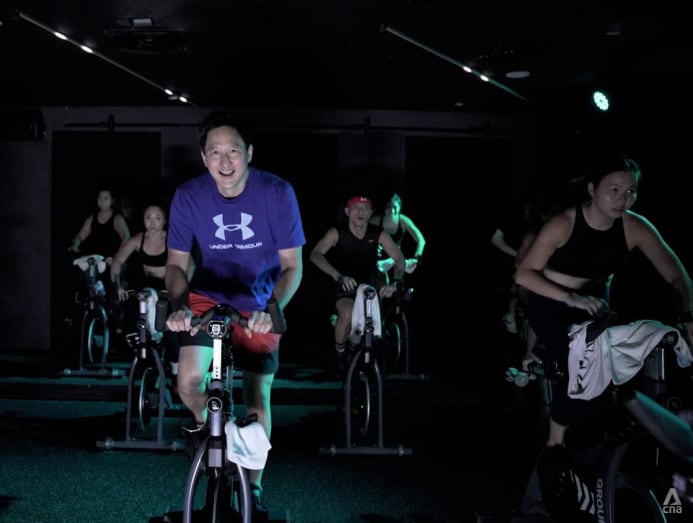
He rated the pain intensity a three out of five and felt no pain the next morning, which he thought was because in resistance training, “you’re not really forcing your muscles to work that hard”.
The repetitive movement on the bike, however, can lead to an injury such as rhabdomyolysis, Tan pointed out. And besides injuries, another thing the doctor noted about intensive workouts in general is “they’re not complete”.
“They’re very good for strength training, fat loss,” he said. “However, they miss out the part on flexibility and agility.
“We can (do) other (exercises) like yoga … or the (racket) sports — for example, badminton (and) tennis — to build up these aspects.”











